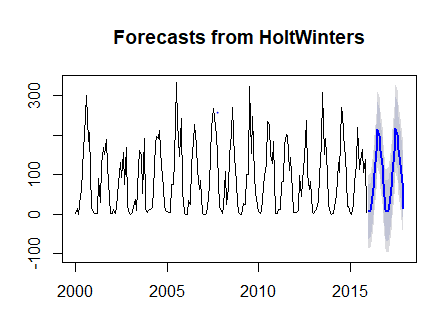I am forecasting rainfall of India using holt winters method. Data is from year 2000 to 2015. I am using monthly data.
library(readxl)
require(graphics)
library(forecast)
library(timeSeries)
library (tseries)
library(ggplot2)
library(TTR)
rn <- read.csv("data/karnataka_rain.csv", stringsAsFactors = FALSE)
r <- ts(rn$rain, start = c(2000, 1), end=c(2015,12),frequency = 12)
head(rn$rain)
plot.ts(r, ylab= "rain", xlab= "year")
decomp_rn <- decompose(r)
plot(decomp_rn)
adf.test(r, alternative = "stationary")
forecast_model <- HoltWinters(r)
forecast_model
plot(forecast_model)
forecast_values <- forecast(forecast_model, h = 24,
level = c(0.85,0.95))
forecast_values
plot(forecast_values)

